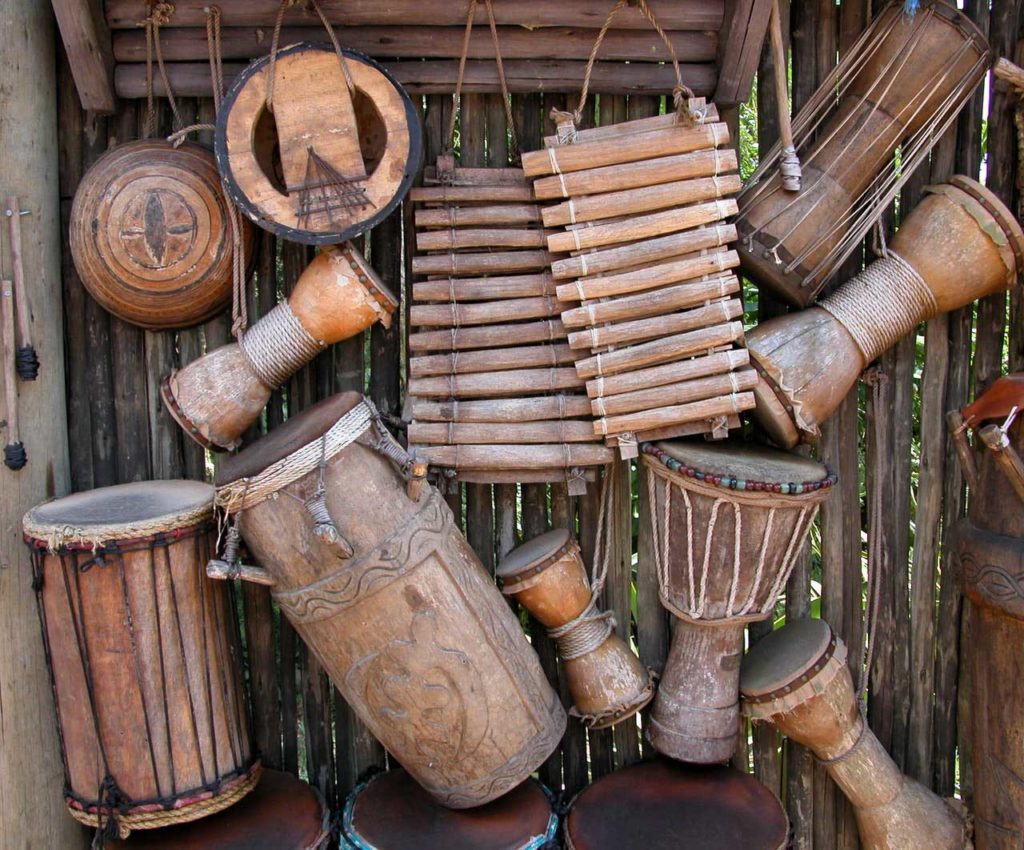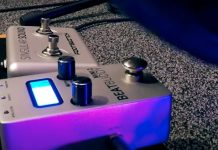Did you know that percussion instruments make up the largest section of any orchestra? They add color and depth to the music, and to do that, percussionists usually play several different instruments during a piece.

With so many choices available, it’s not always easy to choose the best instruments to meet your needs. This hand percussion instrument buyers guide should answer some of your burning questions and make your decisions a little easier!
The Basics of Percussion Instruments
Just in case you aren’t a pro, let’s cover the basics of percussion instruments so that we’re on the same page. Percussion instruments are any instruments that you hit, strike, or scrape to make sounds.
Two Percussion Classifications
Most people further divide percussion instruments into two classifications, tuned and untuned. Sometimes you may see these categories described as pitched and unpitched because it refers to an instrument’s ability to produce a definitive pitch.
Untuned percussion instruments create sound, but no specific pitch, like a triangle or maracas. Conversely, tuned percussion instruments require tuning to deliver a specific pitch, like xylophones and marimbas.
Materials Used for Percussion Instruments
Something that sets percussion instruments apart from others, like strings and woodwinds, is their composition. Percussion instruments use multiple materials to create the sounds that make them famous.
You can find percussion instruments made from metals, woods, ceramics, shells, and more. Many percussion instruments incorporate multiple materials to create unique sounds.
Tips for Buying Tuned Percussion Instruments
Choosing tuned percussion instruments enhances harmony or melody in a composition. Common tuned percussion instruments include the xylophone, tubular bells, glockenspiel, marimba, timpani, and chimes. While they differ in appearance and use, these instruments have the same general buying considerations.
Tuning and Range
How easy is it to tune the instrument yourself? Since these pieces can deliver a specific pitch, it’s helpful to be able to make adjustments yourself instead of taking it to a specialist.
Additionally, you need to consider the note range you need? For example, xylophones come in soprano, alto, and bass ranges, so it’s important to check what’s available on the instruments you’re considering.
Materials
What materials do you prefer? Metal produces a sharper sound and higher pitch than wooden bars. If you want a warmer tone, try wooden bars or a blend. Note that some instruments use only metal, like tubular bells, but that doesn’t mean you don’t have a choice. You may want to experiment to determine which material delivers the sound you seek.
Mallets
What do the mallets look and feel like? If the mallets feel too heavy when you pick them up in the store, imagine what they will feel like after playing for a while! Additionally, the materials used for the mallets can create different sounds depending on the material you strike.
Tips for Choosing Untuned Percussion Instruments
It may sound easier to choose untuned percussion instruments since you don’t have to worry about a specific pitch or sound. However, you still need to consider the sound that the instrument contributes to the overall piece. It’s also important to note that many untuned percussion instruments take time to learn and master the sounds.
Choosing Drums
Drums may be the most popular type of percussion instruments, and they are the oldest musical instrument. As a class, drums come in a wide range of styles ranging from bongos to complete drum kits. Even if they look different, drums all function by striking the drum head.
The drum head is a membrane stretched over and attached to a shell. Traditionally, drum heads came from animal skins, but modern instruments use plastic composites.
Part of choosing the right drums for you depends on how you intend to play them and the type of sound you hope to achieve. Will you use your hands, mallets, or something else, like a brush or broom?
Tip: If you’re buying a drum kit, consider the hardware included with your purchase. Bundles are usually a cost-effective solution, but make sure you get quality pieces and avoid anything that mentions “one-ply.”
Considerations for Shakers
Who wants finger cymbals? Shaking instruments to create sound is something humans learn as children. Even infants find rattles soothing, and it’s one of the older and most versatile instrument types.
Shakers and rattles come in various shapes and sizes. They use unique materials to create different sounds. Think about the difference between maracas and castanets. Though you shake them all to create sound, none of them deliver the same sound.
Buying Tambourines
Tambourines work well with various music styles, including rock, folk, and ethnic songs. Though tambourines use metal jingles on a ring, you can buy some that also have drum heads to expand your sound options.
Choosing a tambourine involves selecting a size that works well in your hand. Be cautious about the weight because heavier wood tambourines can wear you down through a set. If you want a drum head, try for natural or synthetic skins to get the best sound.
Tips for Triangles and Cymbals
Triangles and cymbals are some of the more popular percussion instruments that involve striking a metal piece with a wand or stick. There are not many triangles to choose from, so you may want to consider durability above all else.
For cymbals, you have more options, but it’s still most important to consider durability because they are relatively thin pieces. Try to choose cymbals that are bronze instead of brass.
A Note About Purchasing Obscure Instruments
Experimentation is a cornerstone of creativity and often leads to some of the most intriguing sounds. Expanding your instrument search to other cultures and even historical pieces is admirable. When purchasing an uncommon instrument, like a washboard, you can still consider the above criteria. However, it may require some extra research and experimentation to find the sound you desire.
Final Thoughts
Percussion instruments cover a wide range of pieces that deliver depth and interest to musical compositions. A drum builds rhythm while a well-timed triangle or gong can punctuate a specific part. Percussionists can ground or add interest to any song with the right instruments at their disposal.
That concludes this hand percussion instrument buyers guide. Hopefully, you’ve learned everything you need to make the best decisions for your next performance!











![5 Best Electric Pianos Under $1000 [Reviews & Buyer’s Guide] best electric piano under $1000: Casio PX160BK 88-Key Digital Piano](https://homestudiohub.com/wp-content/uploads/2020/03/null-15-80x60.jpeg)

